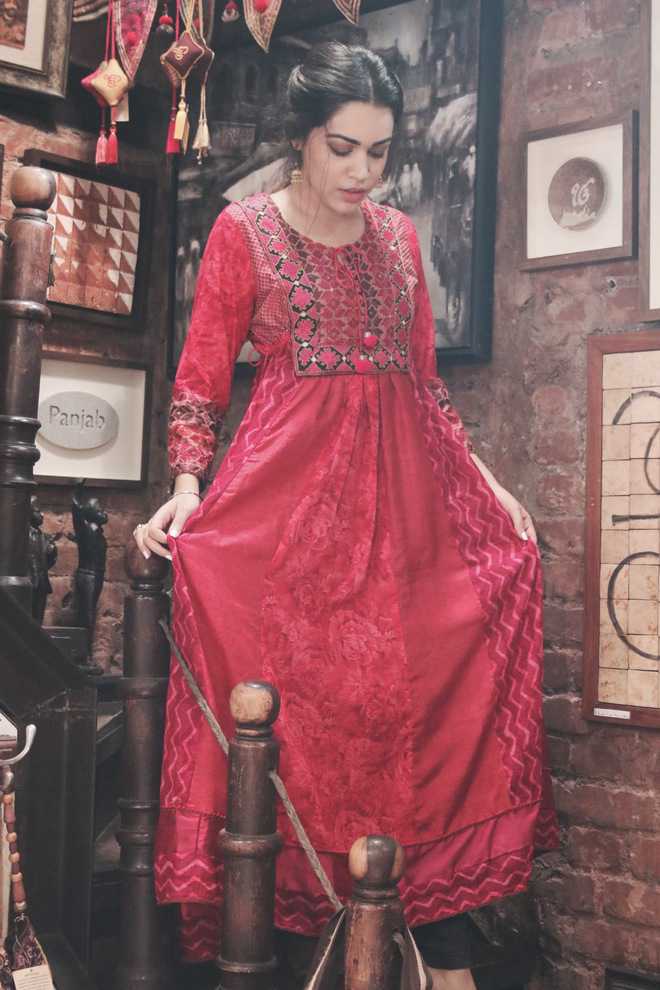Jasmine Singh
Do you recall going back into the story of any garment that you picked up! By story we mean, trying to look back into where the garment came from, the fabric used, synthetic or organically grown, the amount of chemical substances used to convert raw material into a form, or the gallons of water used in the process. We bet, going this far is much more difficult than paying the price of the garment and walking away with it.
So, here’s something that all you fashion followers would want to take a look at. As part of the Greenpeaces’s Detox My Fashion campaign, almost 18 companies including the famous ones like Burberry, Marks & Spencer, H&M have started to eliminate the toxic chemicals from their supply chains. The idea is to make fashion free from hazardous chemicals, which to begin with can be achieved, one, if the designers opt for more sustainable fabrics like cotton.
“When you say a dress or a suit made out of a cotton fabric, you only think of a simple outfit with no cuts, in fact one with little scope for experimentation,” shares Chandigarh-based designer Poonam Pawar who has dedicated her entire line of clothing Prasuci to pure cotton only.
With the word organic spreading over a vast expanse, even fashion, people want to slip into clothes that do no harm to their skin, rather go for clothes that are light and pure. This is where the market for pure fabrics has grown tremendously. Designers in fact have come up with varieties of western and ethic lines dedicated to the cotton fabric that can be worn to any occasion, this means that it too has all the bling, shimmer, gotta patti that we are so fond of.
Something pure
Chemical free clothing lines based on sustainable fabrics like cotton have definitely made in rows in the ‘designer’ category market. Kirandeep Kaur and Harinder Singh of the famous brand 1469 have designed an entire range of ethnic clothes which they call Tumbi kurtis in cotton; these have digitally printed phulkari patterns and they look stunning. Shares Kirandeep, “these are handcrafted couture pieces made in house (front open long jackets, shrugs and anarkali kurtis) tbring together the lost traditions of Punjab in a contemporary style - mirror work, phulkari patches, dories, block printing, the vibrancy of the colour palette from hand embroideries to digital print.”
Does it itch
Dermatologists are often bombarded with cases of fabric allergy. “People want to wear fashionable clothing, they don’t bother to check the fabric they are putting on,” shares Patiala-based skin specialist Nidhi Puri, who recommends cotton clothes to such clients. “When I advice them to do so, they tell me madam, ab cotton ke kapde pehan kar marriage par kaun jatta hai,” she laughs adding that she has heard that designers abroad and in India have started using toxic free fabrics to a great extent.
Even though we have Anokhi, Forty Red Bangles, No Nasties as the organic brands who do not use chemicals, designers have also taken up the challenge of giving cotton a chic look, while keeping its ethnic element intact. Shares, designer Madhvi Singla from Ambala who exports pure cotton western dresses to her NRI clients. She has recently designed an entire wedding trousseau for a Punjabi family in Kota, Rajasthan who wanted everything in cotton. “This is a plain Jane fabric, making wedding outfits in cotton look exceptionally chic was a tough task. I used a lot of phulkari and gotta patti including the traditional phuman’s made out of wool, which is natural protein fibre.”
Fashion doesn’t mean that one has to compromise on their safety or health in any way, it means looking beautiful, which of course can be done without adding toxins, what say!
jasmine@tribunemail.com
Unlock Exclusive Insights with The Tribune Premium
Take your experience further with Premium access.
Thought-provoking Opinions, Expert Analysis, In-depth Insights and other Member Only Benefits
Already a Member? Sign In Now











